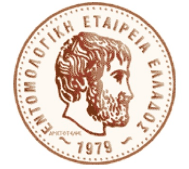Το Κολεόπτερο Epithrix hirtipennis (Melsheimer) της οικογένειας Chrysomelidae βρέθηκε από το συγγραφέα για πρώτη φορά στην Ελλάδα, να προσβάλλει τον καπνό, στην περιοχή του Αγρινίου στις αρχές Μαΐου 1988. Το είδος αυτό παρατηρήθηκε επίσης να έχει προξενήσει σοβαρή ζημιά στη μελιτζάνα, ενώ μόνο μικροί πληθυσμοί παρατηρήθηκαν σε πατάτα όπου και η προσβολή ήταν μικρή. Τώρα, το Ε. hirtipennis έχει εξαπλωθεί και συναντάται σε πολλές περιοχές της Στερεάς Ελλάδας, προσβάλλει δε κυρίως τον καπνό και τη μελιτζάνα, πάνω δε σε αυτούς τους ξενιστές δύναται να αναπτύξει μεγάλους πληθυσμούς. Η πλέον πιθανή εκδοχή είναι ότι το είδος αυτό ήλθε στην Ελλάδα από την Ιταλία με κάποιο μεταφορικό μέσο.Το ενήλικο έχει μήκος περί τα 2 mm και κιτρινο-ερυθρωπό χρώμα. Κάθε έλυτρο φέρει 10 στικτές γραμμές. Η εσωτερική πλευρά των ελύτρων καθώς και η περιοχή περί το κέντρο τους έχουν σχεδόν μαύρο χρώμα. Το αυγό έχει ωοειδές σχήμα, είναι υπόλευκο στην αρχή αλλά λαμβάνει χρώμα αχύρου αργότερα. Η προνύμφη είναι επιμήκης και λευκή, στην πλήρη δε ανάπτυξη της αποκτά μήκος περί τα 4 mm.Το Ε. hirtipennis διαχειμάζει στο στάδιο του ενήλικου κυρίως κάτω από φύλλα και φυτικά υπολείμματα, περιφερειακά των καπνοχώραφων και στις παρυφές κατά μήκος των δασών.Τα ενήλικα εμφανίζονται την άνοιξη και προσβάλλουν τα φυτά στα καπνοσπορεία προξενώντας τρύπες στο έλασμα των φύλλων. Τα αυγά εναποτίθενται στο έδαφος και στη συνέχεια οι μικρές προνύμφες εισέρχονται στο έδαφος και εγκαθίστανται επί των ριζών όπου αρχίζουν να τρέφονται. Οι προνύμφες αφού συμπληρώσουν την ανάπτυξη τους, νυμφώνονται στο έδαφος, ακολουθεί δε κατόπιν η έξοδος των ενηλίκων όπου αρχίζουν να προσβάλλουν ξανά τα φύλλα των φυτών. Η αντιμετώπιση του είδους αυτού βασίζεται κατεξοχή στη χημική καταπολέμηση, η οποία συνίσταται κυρίως στην εφαρμογή διασυστη- ματικών εντομοκτόνων εδάφους και λιγότερο στην εφαρμογή ψεκασμών φυλλώματος με πυρεθροειδή. Επίσης υπάρχουν φυσικοί εχθροί όπως το παρασιτοειδές Microctonus epitricis (Viereck) (Hymcnoptera: Braconidac) καθώς και νηματώδεις του γένους Howardula που ίσως να μπορούσαν να συμβάλλουν στη βιολογική καταπολέμηση του.
(EL)
The tobacco flea beetle, Epithrix hirtipennis (Melsheimer) (Coleoptera: Chrysomelidae) was first noticed on tobacco in Agrinio area in early May 1988. In the next year it was also found to attack tobacco in the same area. Heavy attacks were also recorded on eggplant while a low infestation was noticed on potato and pepper. To date this species is widespread in several areas of Phthiotis (Central Greece) where tobacco is grown developing quite large populations. The adult feeds on the leaves causing almost circular holes, usually 1-2 mm in diameter, and irregular shape ones when they are larger. The adult starts feeding usually from the upper surface of the leaves and to a lesser extent from the underside. When large numbers of adults are present, larger holes are caused on the tobacco leaves while in higher population densities, the whole lamina except of nerves can be eaten, leading to severe damage of the crop. The adult was usually found on the upper surface of the lower tobacco leaves. It showed a strong feeding preference for the lower then the upper leaves of tobacco, as well as plants of reduced growth. The latter preference could be taken into account in an integrated pest management programme for tobacco pests. E. hirtipennis is of nearctic origin, known in U.S.A., Canada, Cuba, Mexico, Guatemala, Panama, Colombia and pos sibly occurs in other areas of Central and South America. It is a polyphagous species attacking cultivated plants and weeds such as tobacco, eggplant, potato, tomato, pepper, Jimson weed, ground cherry, nightshade, horse nettle and to a lesser extent many other plants. In tobacco, one adult has been estimated that can eat leaf quantity equal to ten times of its own weight in a day. Therefore, it can lower both the quantity and quality of leaves. E. hirtipennis was unknown to European countries until 1983. The first record in Europe was on tobacco in the area of Benevento, in the Campania region, South Italy. Later, it was recorded in Toscana, whilst Sannino and Balbiani reported that it was already present in the provinces of Campania, Basilicata, Lazio, Puglia, Abruzzo, Toscana and Umbria; Toscana and Umbria are the last areas in which the species was recorded. After its appearance, it has progressively spread into South and Central Italy causing damage which depends upon tobacco type. The record of E. hirtipennis at first in Agrinio area and later in other areas of Central Greece reveals that it rather invaded West Greece through transport from Italy and has spread to other areas.
(EN)

